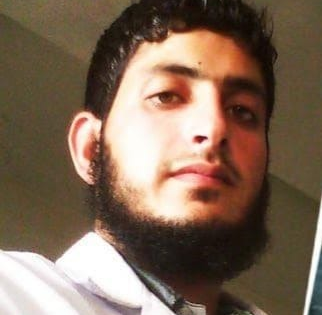Delhi blast: Diary, notebook found in Al Falah University rooms of Muzammil, Umar reveal terror plot details
By IANS | Updated: November 13, 2025 09:50 IST2025-11-13T09:48:12+5:302025-11-13T09:50:10+5:30
New Delhi, Nov 13 A diary and notebook recovered from Dr Muzammil’s and Dr Umar Mohammad's room in ...

Delhi blast: Diary, notebook found in Al Falah University rooms of Muzammil, Umar reveal terror plot details
New Delhi, Nov 13 A diary and notebook recovered from Dr Muzammil’s and Dr Umar Mohammad's room in Al Falah University have revealed crucial details about the planning of a terror attack. Investigators believe the terrorists had been conspiring for quite some time as part of a larger, well-coordinated plan.
According to investigating agencies, diaries belonging to Dr Umar Mohammad and Dr Muzammil have been seized and are expected to answer several key questions related to the Delhi Red Fort blast. The diaries were recovered on Tuesday and Wednesday from Dr Umar’s room number 4 and Dr Muzammil’s room number 13.
Police also recovered a diary from Muzammil’s room, where 360 kg of explosives were earlier found in Dhauj, Faridabad, about 300 meters from Al Falah University.
Investigators said the recovered diaries and notebooks contain coded words and references to dates between November 8 and 12, suggesting ongoing planning during that period. The documents also list the names of around 25 individuals, mostly from Jammu and Kashmir and Faridabad. The matter remains under active police investigation.
Meanwhile, investigators have also confirmed that Dr Umar Mohammad, a senior doctor at Al Falah University in Faridabad, was driving the i20 car that exploded near the Red Fort on November 10, killing 12 people and injuring many others.
According to Delhi Police sources, DNA test results conclusively established Umar’s identity. His DNA sample matched 100 per cent with that of his mother and brother, leaving no doubt about his presence in the vehicle at the time of the explosion. The DNA was extracted from bone fragments, teeth, and pieces of clothing recovered from inside the mangled remains of the i20.
The powerful explosion took place at around 6.52 p.m. on November 10, sending shockwaves across the national capital and sparking immediate security alerts. The blast occurred close to one of India’s most iconic monuments, raising alarm over the breach in the high-security zone surrounding the Red Fort.
In the aftermath of the incident, the National Investigation Agency (NIA) has officially taken over the probe from the Delhi Police’s Special Cell. NIA officials have cordoned off the area and are conducting forensic examinations of the debris, including explosive residues, vehicle components, and digital evidence.
Preliminary findings suggest that the car was rigged with high-grade improvised explosive devices (IEDs). Investigators are now tracing the origin of the explosives and attempting to map Umar’s movements in the days leading up to the blast.
Sources also revealed that Umar had left his Faridabad residence earlier that day, informing colleagues that he was attending a personal engagement in Delhi. Authorities are examining whether he acted alone or in coordination with a larger network.
The blast on November 10 came hours after the Jammu and Kashmir Police recovered nearly 3,000 kg of explosives from two residential buildings in Faridabad in Haryana.
Disclaimer: This post has been auto-published from an agency feed without any modifications to the text and has not been reviewed by an editor
Open in app